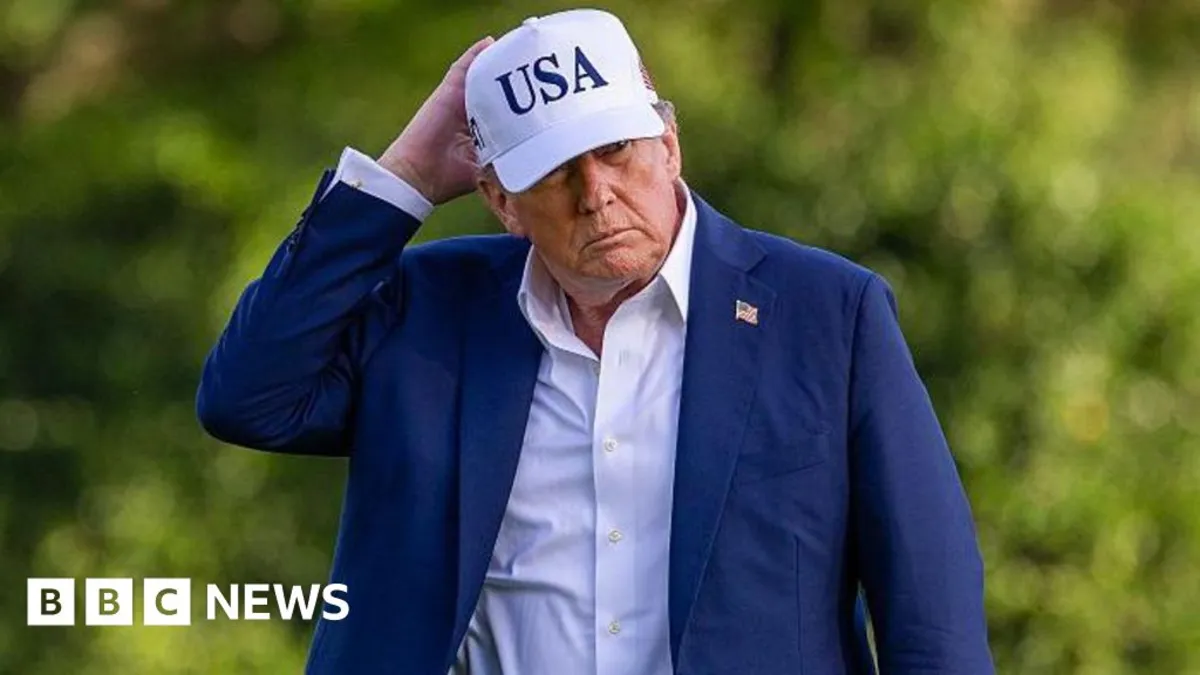
During his time in office, Donald Trump and his administration made bold promises, including the ambitious goal of securing 90 trade deals in 90 days. However, as the first deadline approaches on July 9, it appears that the reality is far from those grand claims, with projections indicating that not even nine deals will be finalized by that date. This situation has prompted an extension of the deadline from Wednesday until August 1, with hints of possible further delays, raising concerns about the administration's ability to follow through on its commitments.
From the perspective of the United States, Treasury Secretary Scott Bessent has stated that the administration's focus remains on the 18 countries that account for a staggering 95% of America's trade deficit. The letters being dispatched to trading partners this week are reminiscent of the notorious White House Liberation Day blue board and are essentially a reiteration of earlier proposals. The rates outlined in these communications are largely unchanged from those disclosed on April 2, indicating a lack of significant progress.
Financial markets have remained surprisingly stable despite the ongoing delays. This stability has led to a prevailing sentiment known as TACO—an acronym for Trump Always Chickens Out. However, this perception may encourage procrastination among trade partners, ultimately leading to a renewed crisis. The real takeaway from this situation is the Trump administration's struggle to secure meaningful trade agreements, as evidenced by the letters sent out, which many interpret as an admission of failure.
Countries like Japan and South Korea have been highlighted in the initial correspondence, further complicating their trade relations with the U.S. Japan, in particular, has openly expressed its displeasure with the U.S. approach, with its finance minister suggesting that the nation's substantial holdings of U.S. government debt could serve as a leverage point in negotiations. Despite these tensions, the overall dynamic has remained largely unchanged since April, with global markets reacting negatively to the prospect of a trade war.
As the trade landscape shifts, the repercussions of an altered global trading system are becoming increasingly apparent. The value of the dollar has fallen by 10% this year against various currencies, contradicting Bessent's earlier assertion that the dollar's value would rise to mitigate inflation caused by tariffs. Instead, recent economic data indicates a troubling trend, with significant fluctuations in trade numbers. For instance, Chinese exports to the U.S. have dropped by 9.7% this year, while their shipments to other countries have seen a 6% increase.
The ongoing trade tensions have also resulted in substantial revenue flows into U.S. Treasury coffers, with record receipts reported in May. As the U.S. constructs a tariff wall, global trade patterns are evolving, with countries looking to strengthen their economic ties with one another. This shift is exemplified by recent trade agreements between the UK and India, as well as the EU and Canada.
It is essential to note that the effective tariff rate imposed by the U.S. on the rest of the world has surged to approximately 15%, a significant increase from the previous range of 2% to 4% over the past four decades. While market reactions remain calm for the time being, the future remains uncertain as the potential for volatility looms on the horizon.